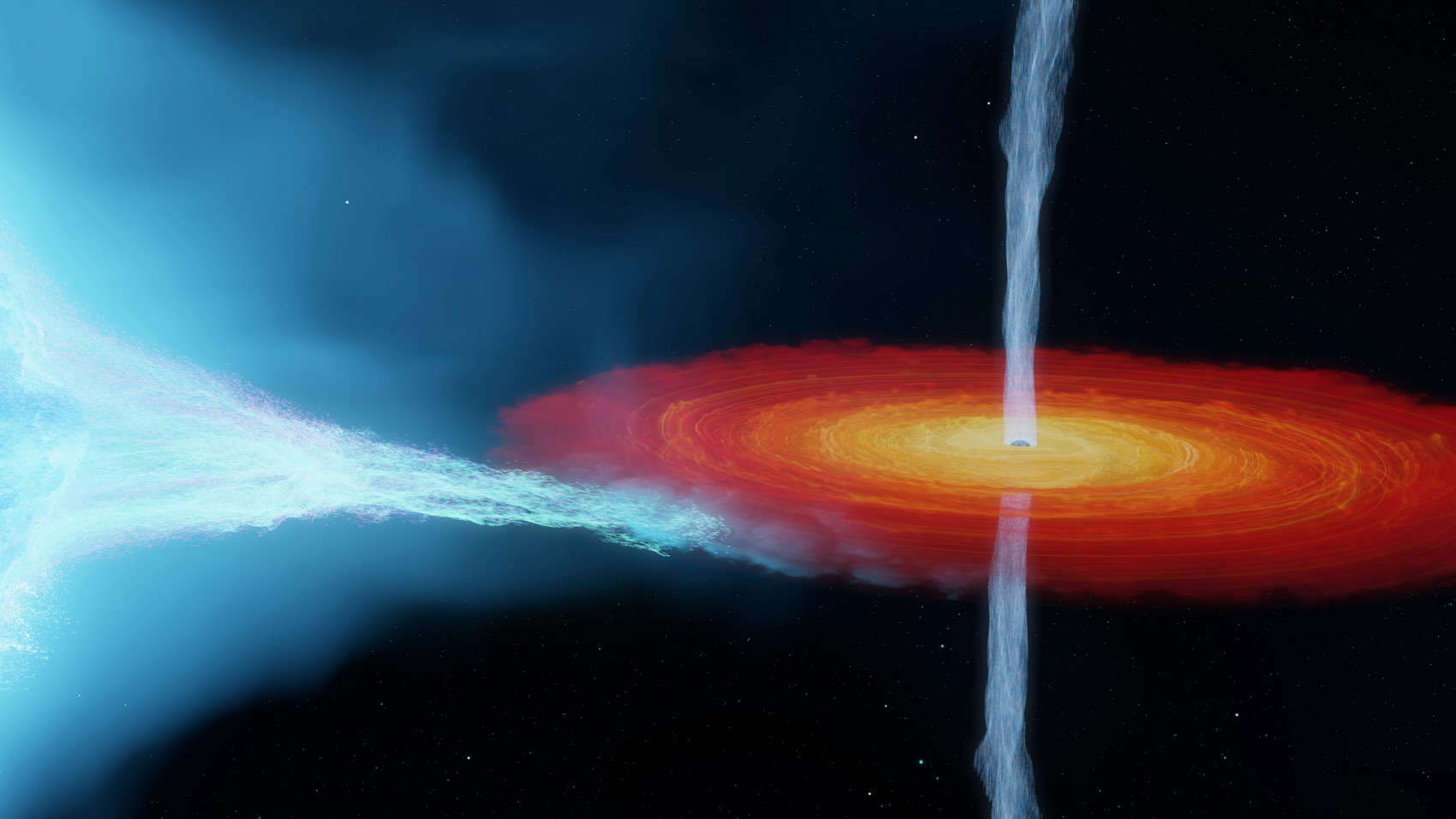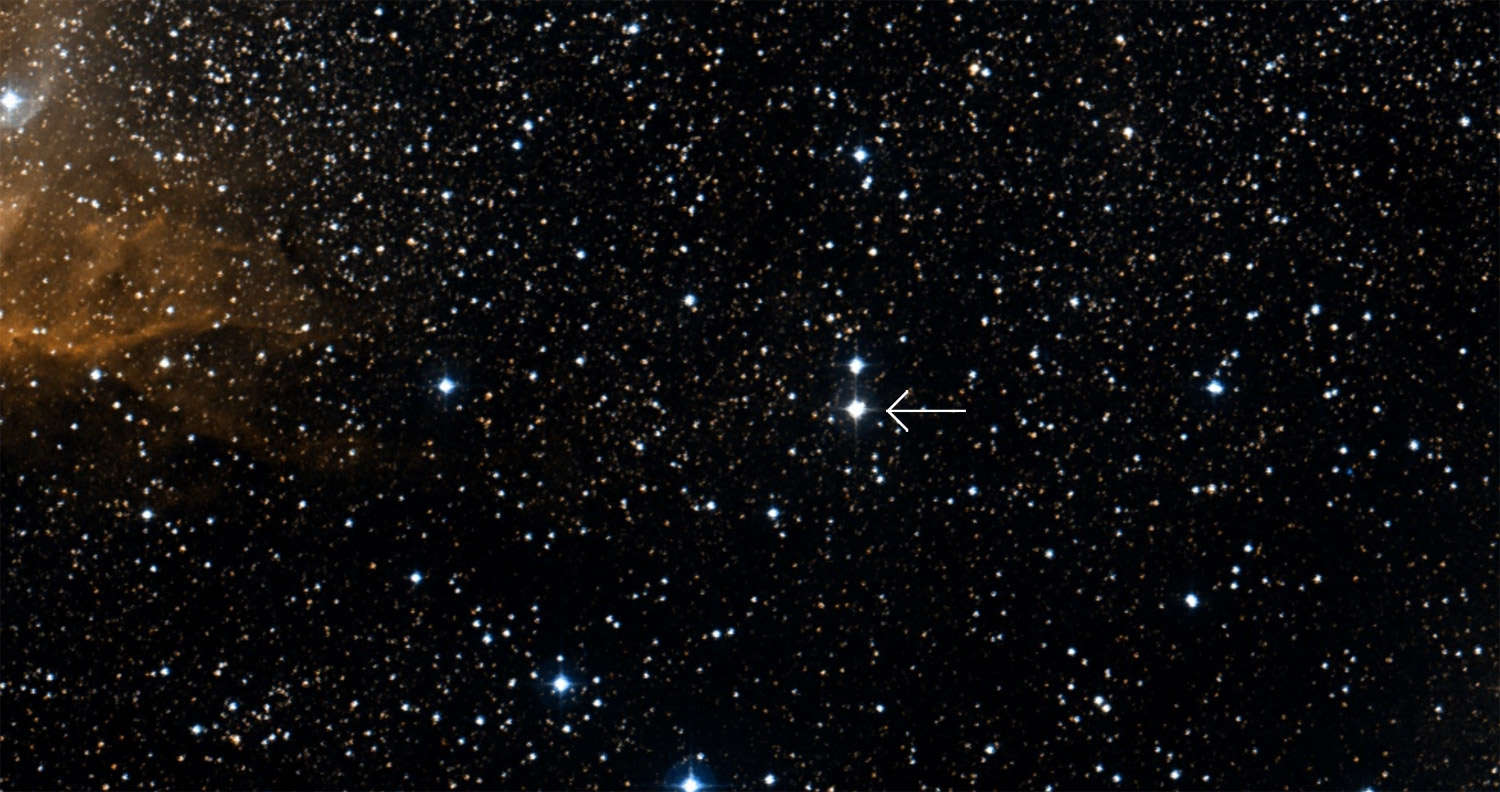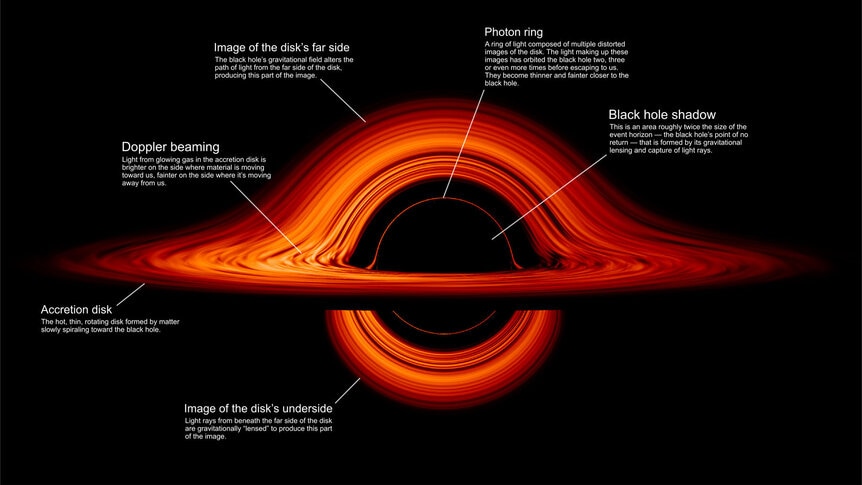Create a free profile to get unlimited access to exclusive videos, sweepstakes, and more!
Cygnus X-1, the first black hole ever detected, is more massive than we thought

Black holes are everywhere.
Luckily, space is big*, so even the closest ones we know of are pretty far away, thousands of light years distant. And we see them in every decently sized galaxy out here, too, from millions to billions of light years away.
But Cygnus X-1 is special. It was the first. The first ever detected, that is, and is still one of the closest we know. But new observations show that a few things we thought we knew about it weren't right, including its distance, mass, and even how it formed, which means astronomers will need to rethink some details on how stars collapse to create these objects.
Cygnus X-1 was discovered in 1964, when what were essentially fancy Geiger counters were launched into space on a series of suborbital flights. They detected X-rays coming from the direction of the constellation Cygnus. Radio observations made in 1971 pinpointed the position of the source on the sky, which surprisingly was a luminous blue O-type star called HD 226868. These are massive and powerful stars, but don't make X-rays as strongly as was being detected.
That same year, though, a cyclic Doppler shift was seen in the star's light, indicating a massive object was orbiting it, though nothing was seen. This was the first strong evidence that Cyg X-1 was a black hole.
It's been studied extensively over the years, and there's no doubt as to its nature as a black hole. Until recently (ooooh, foreshadowing), various methods put its distance at a little over 6,000 light years, and its mass at just under 16 times the Sun's. The O-star it orbits is much more massive, dozens of times the Sun's mass, and they circle one another every 5.6 days.
This kind of system is called a high-mass X-ray binary, and many are known. The most massive one has a black hole just under 16 times the Sun's mass. That puts Cygnus X-1 at the top of its class.
… except things have changed. New radio observations (combined with older ones covering about 7 years in total) using the Very Long Baseline Array (VLBA) indicate the distance to the black hole isn't 6,000 light years but just over 7,200 light years, a significant increase. They used what's called parallax: As the Earth orbits the Sun over the course of a year, we see the system at a very slightly different angle. The farther the object the smaller the angle, and since we know the Earth-Sun distance we can use trigonometry to calculate the object's distance.
That changes things. Because it's farther away the star is more luminous than first thought. It blasts out over 400,000 times the Sun's energy! It has to be more massive to do that than previously thought, too, and the new mass found is about 41 times the Sun's mass.
That means the black hole is more massive, too. It's not 15 times the Sun's mass, it's 21 times the Sun's mass.
Oof. That's far higher than the highest known black hole mass in an X-ray binary system. And it's difficult to explain.
Black holes form when massive stars run out of fuel in their cores and explode. The outer layers blast away in a supernova, and the core collapses to form the black hole. The mass of that black hole depends on many things, including the mass the star was born with, what elements are in it, how much mass the star lost over its lifetime by blowing away part of its outer layers in a wind (like the solar wind but much stronger). In the case of Cygnus X-1 it also depends on the other star in the binary system as well.
The problem here is that given this new mass, it would seem that the black hole's progenitor star must have been about 60 times the Sun's mass, a monster. Those stars usually blow quite the wind, but the stellar models suggest that at that mass it would've blown too much wind by a factor of two or three; the star would've lost too much mass to explain the black hole's current heft. Something must have choked those winds.
It's not clear what. The O-star companion has an unusually large amount of heavy elements in it, and it probably got those from the black hole's progenitor star before it exploded. But (for complicated reasons) those usually lead to a strong wind, and that doesn't make sense. If these revised numbers hold up, it means the models of how massive stars blow winds under similar circumstances need to be rethought as well.
This may sound a bit esoteric, but it's pretty important. Binary systems like this are easy to spot in other galaxies, and can be used to determine the environment in those galaxies. Also, eventually that O star will explode and also form a black hole. The two will spiral together, and in a few billion years will merge, blasting out gravitational waves. We see events like this happening all over the Universe, and they appear to come from black holes more massive than we usually see (in 2019 a merger was seen from a system with black hole masses of an astonishing 66 and 85 times the Sun's mass). We don't know how black holes get that massive. Studying Cygnus X-1 can help us figure that out.
Plus, black holes are just cool. Finding out that one of the closest, and the very first one ever discovered, is farther away and more massive than we thought is a big deal. It shows there's still a lot we have to learn about these bizarre objects.
*Hence the name.




























